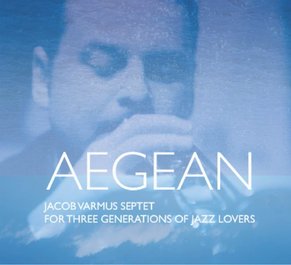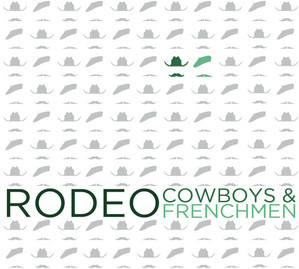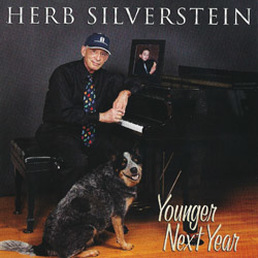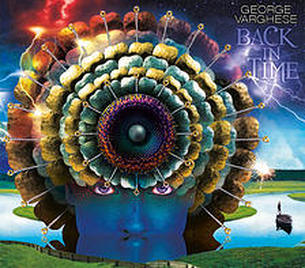
The septet is a superb lineup of hired guns who are a great ensemble for the compositions. Varmus leads on trumpet and cornet, Hashem Assadullahi is on alto and soprano sax, the brilliant Pete McCann plays guitar, Leonard Thompson and Broc Hempel split duties on piano and keyboards while Sam Trapchak (bass) and Christian Coleman (drums) anchor the rhythm section.
Varmus’ compositions are distinct and varied, showing great expression of character and technique, energy and emotion.
The album opens with “Elma” and the first notes you hear from Pete McCann’s guitar, the Trapchak’s bass. Thompson adds his delicate piano touch before Varmus joins with his fine trumpet.
It is lyrical and soulful. Coleman’s drum work is rich and tonal, contributing his own melodic sense to the piece. Assadullahi’s alto sax adds a lush backdrop. Trapchak’s bass solo is gorgeous and McCann blends in for his own solo in transition from the bass solo. Seamless.
I strapped in for the ride I knew that “Aegean” was bound to be.
“Areti” starts out with charming piano from Thompson until the rhythm section joins in with wonderfully quirky rhythms. McCann adds a fun—even wicked—guitar show over the riotous rhythm section.
Varmus’ trumpet does nothing to constrain the uproar but, instead, joins the brash bad boys. For all of the fun and humor, this is a masterfully crafted composition. It makes you fondly recall Frank Zappa, who wrote such fun music that was so brilliantly and exactingly constructed.
Assadullahi’s alto sax runs the piece to conclusion. Yeah, this was quite a ride.
“Phineas” opens with Thompson’s electric keyboard with the horns coming aboard in a gentle and evocative duo. This is reminiscent of some of Freddie Hubbard’s gentler moments.
Hashem Assadullahi gets his first big spotlight on this track and he proves why he is on the recording. You have to admire and love his off-playing. Sam Trapchak solos meaningfully before Pete McCann turns on an understatedly electrifying guitar solo and then plays over against the horns in an exquisite example of over-crowding in a hot Jazz counterpoint kind of way.
“Lily” is sweet and romantic. It is energetic and lovely. Sax and trumpet speak in dialogue of her while the electric keyboard contributes its own ode. The bass and drums stroll and step delightfully and McCann rhapsodizes in agreement. Varmus saves the last word for himself.
“Nidal” bounces in with the horns in corps progression and the rhythm section is tight lock-step. Varmus’ trumpet lead drives ahead as bass and drums propel from behind. This could be the tightest number on the album. Piano, bass and drums simply thunder on this track. I admit that Coleman stole my attention.
“Zeina” gives all the artists a spotlight. Varmus, Assadullahi, McCann and Thompson are in together and the melodic expression is lovely Jazz. Trapchak and Coleman put forth stellar rhythmic backing. Varmus and Assadullahi are in great partnership as McCann works in and out of the piece.
“Lyra” is a live piece. It swings beautifully. Light-hearted and energetic, Broc Hempel turns in hot piano work. Pete McCann is his usual cool self and the horns punctuate the melody with staccato punches.
“Apostolos & Stelios” continues live with the same line-up. Varmus has a more pronounced lead role and continues to show why he got the commission for both his writing and his performance. Assadullahi gets an absolutely sublime sax solo. It definitely bears repeated listening.
McCann and the rhythm gang slide into a great bit before Varmus returns to the lead. Trapchak and Coleman are just on fire together. There are a dozen great elements to this track. You just need to hear it.
“Selena” opens with the cool sounds of the muted trumpet and the swing of the bass and drums. McCann accompanies finely before the piano takes over briefly. Hempel is back on piano and adds his own unique flavor as he leads then backs up Varmus. McCann contributes the ever-so-sweet tones to make this track a big score.
“Elma” (from track 1) is reprised live for the next track. MCCann again opens the piece with cool harmonics and delicate touch. Varmus doubles with McCann and the live version (almost two minutes longer than the studio version) is every bit as wonderful as the piece has proven to be. The live atmospherics truly do contribute to the great feel of the overall piece. This track gets me.
Conversely, “Lyra” goes into the studio to conclude the album. The speed and deliberateness is so tight. Same with “Elma,” both are given studio and live incarnations. So nice, you need ‘em twice.
Jacob Varmus’ “Aegean” is as warm and lively as the sea it is named for. Like laying on one of its namesake’s beaches, the experience of this album gives a feeling of the rejuvenating air and water that makes one sigh in comfort and in the joy of life.
The compositions on Aegean are first-rate and the musicianship is second-to-none. It is an album that has landed solidly on my shelf of favorite CDs—to be accessed very frequently.
Thank you, Apostolos Georgopoulos, wherever you are.



 RSS Feed
RSS Feed
